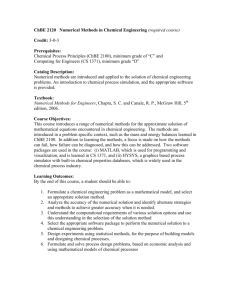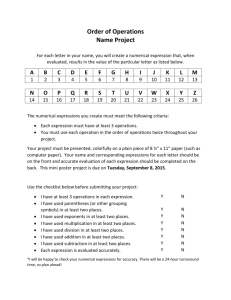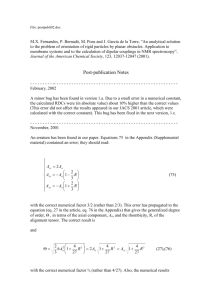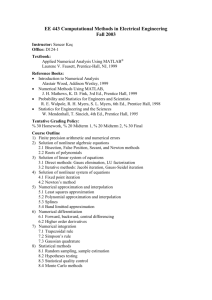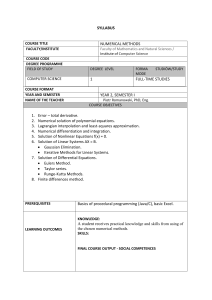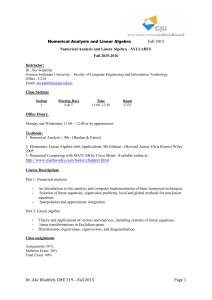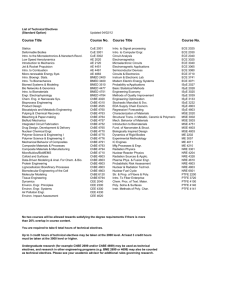ChBE 2120 Numerical Methods in Chemical Engineering (required
advertisement
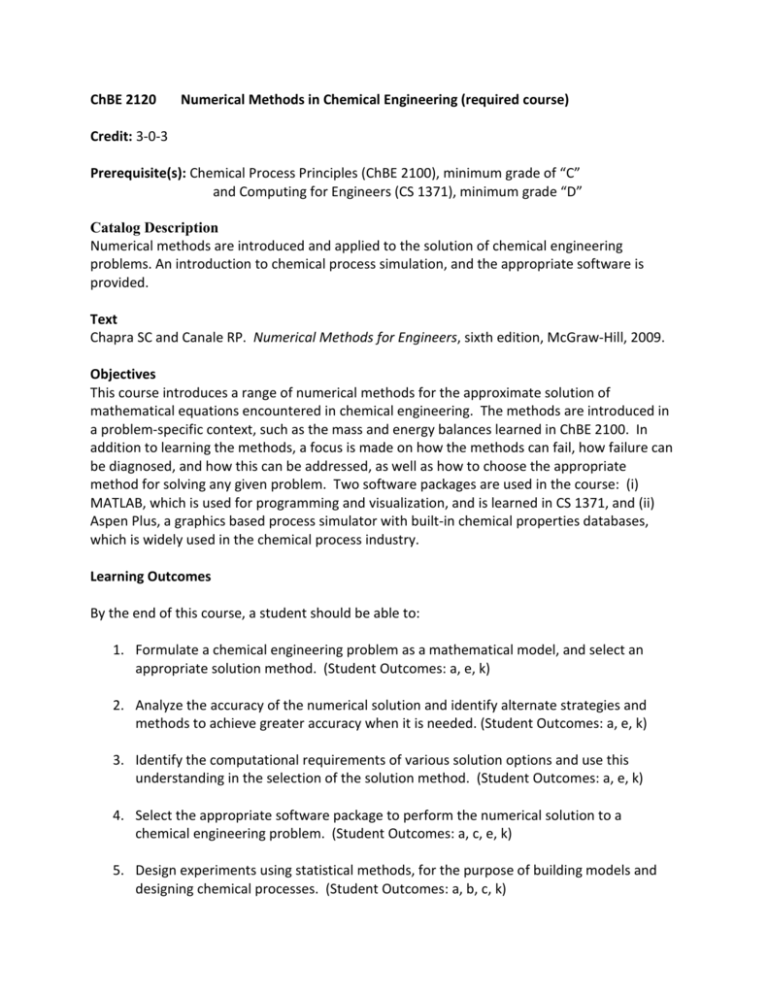
ChBE 2120 Numerical Methods in Chemical Engineering (required course) Credit: 3-0-3 Prerequisite(s): Chemical Process Principles (ChBE 2100), minimum grade of “C” and Computing for Engineers (CS 1371), minimum grade “D” Catalog Description Numerical methods are introduced and applied to the solution of chemical engineering problems. An introduction to chemical process simulation, and the appropriate software is provided. Text Chapra SC and Canale RP. Numerical Methods for Engineers, sixth edition, McGraw-Hill, 2009. Objectives This course introduces a range of numerical methods for the approximate solution of mathematical equations encountered in chemical engineering. The methods are introduced in a problem-specific context, such as the mass and energy balances learned in ChBE 2100. In addition to learning the methods, a focus is made on how the methods can fail, how failure can be diagnosed, and how this can be addressed, as well as how to choose the appropriate method for solving any given problem. Two software packages are used in the course: (i) MATLAB, which is used for programming and visualization, and is learned in CS 1371, and (ii) Aspen Plus, a graphics based process simulator with built-in chemical properties databases, which is widely used in the chemical process industry. Learning Outcomes By the end of this course, a student should be able to: 1. Formulate a chemical engineering problem as a mathematical model, and select an appropriate solution method. (Student Outcomes: a, e, k) 2. Analyze the accuracy of the numerical solution and identify alternate strategies and methods to achieve greater accuracy when it is needed. (Student Outcomes: a, e, k) 3. Identify the computational requirements of various solution options and use this understanding in the selection of the solution method. (Student Outcomes: a, e, k) 4. Select the appropriate software package to perform the numerical solution to a chemical engineering problem. (Student Outcomes: a, c, e, k) 5. Design experiments using statistical methods, for the purpose of building models and designing chemical processes. (Student Outcomes: a, b, c, k) 6. Formulate and solve process design problems, based on economic analysis and using mathematical models of chemical processes (Student Outcomes: a, b, c, e, k) Topical Outline 1. Solution of algebraic equations a. Application in mass and energy balances b. Numerical methods include i. Linear equations: Gauss elimination ii. Nonlinear equations: Newton-Raphson 2. Integrals and integration of differential equations a. Applications in chemical reaction and diffusion b. Numerical methods include i. Initial value problems: Runge-Kutta methods ii. Boundary value problems: finite difference methods iii. Numerical integration: Newton-Cotes and Gaussian quadrature 3. Optimization a. Applications to process design i. Plant economics ii. Equipment sizing b. Numerical methods include i. Gradient steepest ascent ii. Newton’s method 4. Statistics and decision making a. Applications i. Curve fitting ii. Hypothesis testing iii. Design of experiments b. Numerical methods i. Linear models: least squares regression ii. Nonlinear models: minimize error by optimization methods 5. Process modeling software a. Applications in material and energy balances b. Numerical methods i. Aspen Plus ii. Relationship to specific methods already learned Prepared by: Mark Styczynski Last modified March 21, 2014
